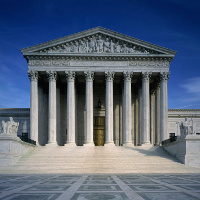 The global COVID-19 pandemic has challenged multiple aspects of modern society in a short time. Health and public safety, education, commerce, research, arts, and even basic government functions have had to change dramatically in the space of a couple months. Some good news in all this is the response of many companies in the intellectual property (IP) industries: they are stepping up to make sure crucial information and materials are available to speed research and development (R&D) towards vaccines, therapeutics, and medical devices. This blog post gives a sampling of the current initiatives facilitating the best innovative work the world has to offer.
The global COVID-19 pandemic has challenged multiple aspects of modern society in a short time. Health and public safety, education, commerce, research, arts, and even basic government functions have had to change dramatically in the space of a couple months. Some good news in all this is the response of many companies in the intellectual property (IP) industries: they are stepping up to make sure crucial information and materials are available to speed research and development (R&D) towards vaccines, therapeutics, and medical devices. This blog post gives a sampling of the current initiatives facilitating the best innovative work the world has to offer.
Bio-pharmaceutical companies
Bio-pharmaceutical (bio-pharma) companies have been leading the charge, collaborating with academic and government partners to advance vaccine and therapy candidates on a fast track. While there have been isolated stories of some IP-related issues for rapid deployment and use of medical devices such as ventilators, the overall message is clear that research, development, and deployment have not been hindered by IP rightsholders. In fact, problems for distribution of medicines, personal protective equipment, and medical devices have little to do with IP rights but rather with hoarding and nationalistic impulses by governments.
Examples of rapid response are abundant. In February, the Department of Health and Human Services and its Biomedical Advanced Research and Development Authority (BARDA) partnered with the Janssen Research & Development unit of Johnson & Johnson to investigate a promising vaccine candidate. Janssen also committed to invest in the scale-up of production and manufacturing capacities to produce the vaccine candidate if it succeeds through clinical trials. By mid-March, 50 drugs that might fight the virus had been identified by collaborations of hundreds of scientists. Research continues apace and 80 clinical trials are proceeding, some on fast track status including a potential vaccine.
Beyond its core R&D, regulatory, manufacturing, and distribution mission, the bio-pharma industry is providing direct support to many places in need. This includes donations of medical supplies and personal protective equipment (PPE), existing treatments and medicines, and monetary and in-kind support.
At the same time, private incentives are more important than ever to get novel vaccines, drugs, and devices out to the world in safe, efficacious form and at scale. Dr. Anthony Fauci, Director of the National Institute of Allergy and Infectious Diseases, has long recognized that exclusive licenses of IP to bio-pharma industry partners are necessary to get innovative vaccines and drugs to the public:
He argued that for vaccines like Zika, which might predominantly be used in low-income countries, drugmakers don’t see a lot of financial incentive to get involved, which is why the NIH needs to grant exclusive licenses. But he argued that the process hasn’t had an impact on vaccine affordability.
“I have not seen in my experience situations in which we were involved in the development of a vaccine, particularly for low- and middle-income countries that really needed it, where the pharmaceutical companies priced it out of their reach,” Fauci said.
Likewise, as noted innovation scholars Daniel J. Hemel and Lisa Larrimore Ouellette point out in a recent article, Innovation Policy Pluralism, multiple vectors of public and private incentives and resources work together to advance pioneering innovation. Even in countries with a national health or single payer system, the government health program does not manufacture vaccines, drugs, or devices. Instead, it relies on private firms that in turn work closely and well with public and academic researchers to identify pressing problems, locate relevant basic science advances, and then translate those into actual vaccines, therapies, or devices.
The myth of patients and the public “paying twice” for bio-pharma innovation arising from public-private partnerships is pernicious. It conflates the distinction between basic science research and drug or vaccine candidates, on the one hand, with compounds that can be produced at scale, distributed safely, and that have passed arduous clinical trials to demonstrate safety and efficacy. In the United States, private companies must foot the entire bill for these clinical trials, which run into hundreds of millions of dollars over three phases that enroll thousands of subjects. Simply stated, publicly funded research does not result in a substance or compound that can be manufactured and distributed as is with no further R&D or clinical trials.
A related myth is that governments should use compulsory licenses and similar mechanisms to bypass IP rights holders in an effort to speed research and delivery of drugs and vaccines—when they emerge—to the public at low to no cost. First, there are important distinctions between compulsory licenses, U.S. Bayh-Dole style march-in rights, and government use under statutory provisions like 28 USC 1498, which we have outlined here. But across all of them, IP rights holders must still be compensated at a fair market license rate. Thus, there are no “savings” of IP royalties that could lower the price of vaccines or drugs. This makes sense as we don’t force manufacturers to produce drugs or vaccines for free. Even the Defense Production Act merely directs production, it does not require manufacturers to produce goods for free.
Finally, even if patents could be disregarded, we should be careful about encouraging “open source” or amateur production of regulated devices like ventilators. While the FDA has authorized some limited modifications of approved ventilators to accommodate the exigencies of COVID-19, this does not create a free-for-all in which wholesale changes or entirely new designs of the device or its components can be used. We need to take care that these modifications or new designs are actually safe and efficacious. Thus, while innovation like that of famed inventor James Dyson is most welcome, it does not actually solve the immediate problem of a shortage of ventilators as national regulators must still test and approve these untested devices for medical use. And at any rate, Dyson is not offering their new ventilators for free, even as they are designed to be produced at lower costs and sell at a lower point price in the market.
Thus, we need the bio-pharma industry more than ever to get through this pandemic. Large established firms and nimble start-ups have the resources and expertise to innovate and produce vaccines, drugs, and devices that will pass regulatory muster for safety and efficacy. Now is not the time to attack the patent system and weaken incentives for full-steam-ahead bio-pharma and medical device R&D.
Scientific publishing
Similar to the bio-pharma companies, publishers have been leading the way in making crucial scientific and technological information widely available in order to help fight the global coronavirus pandemic. An open letter from Kelvin Droegemeier, Director of the White House Office of Science and Technology Policy (OSTP) and member of President Trump’s Coronavirus Task Force, issued the call to arms last month (for example, see here, here, and here). Joined by government science leaders from eleven other countries—Australia, Brazil, Canada, Germany, India, Italy, Japan, Republic of Korea, New Zealand, Singapore, and United Kingdom—the letter called for publishers to make all research and data related to the coronavirus available immediately to the public. Publishers were quick to respond positively to the letter, pointing out that many journals had already been opened up to the public in an effort to support the dissemination of important scientific research and data when it is needed the most.
In the letter, the government science leaders stated: “To assist efforts to contain and mitigate the rapidly evolving COVID-19 pandemic, basic science research and innovation will be vital to addressing this global crisis. Given the urgency of the situation, it is particularly important that scientists and the public can access research outcomes as soon as possible.” The leaders asked the publishers to voluntarily agree to make their coronavirus-related publications, and the data supporting them, immediately accessible in PubMed Central and other public repositories. PubMed Central refers to the digital archive of biomedical and life sciences journal literature at the U.S. National Institutes of Health’s National Library of Medicine. The leaders also requested that the information be made available in both human and machine-readable format to allow for text and data mining using artificial intelligence.
The same day that the government science leaders sent their letter, Maria Pallante, President and CEO of the Association of American Publishers (AAP), issued a statement noting that the organization and its members would be happy to continue doing their part in making the research and data available to the public:
Likewise, Elsevier, which specializes in publishing global information on science and health, has taken the lead in ensuring that relevant scientific information is available to the public. Back in January, Elsevier set up its Novel Coronavirus Information Center, offering free health and medical research information on the coronavirus and COVID-19, the disease that is causes. The Information Center is updated daily with the latest research information, including links to nearly 20,000 peer-reviewed journal articles on its ScienceDirect platform that are curated by clinicians and other experts. The information is intended for use by practitioners, such as nurses and doctors, as well by patients and their families. In response to the letter from the government science leaders, Elsevier announced in a press release that same day that the information would be made available to PubMed Central and other publicly funded repositories, including in machine-readable format that could be used for full text and data mining.
Kumsal Bayazit, the CEO of Elsevier, also released a statement that day underscoring Elsevier’s continued leadership on this front and concluding:
Numerous other publishers have stepped up as well. Wiley announced that it “is making all current and future research content and data on the COVID-19 Resource Site available to PubMed Central” and “other publicly funded repositories, such as the World Health Organization (WHO) COVID-19 database and Wellcome Trust.” The Resource Site was set up by Wiley in February in order to ensure rapid, public access to COVID-19 research, and in response to the request of the government science leaders, Wiley is now inputting that information into PubMed Central and other publicly-accessible databases. Likewise, Springer Nature stated: “We have made available, for free, all relevant research we have published and continue to publish, [and] are strongly urging our authors submitting articles related to this emergency to share underlying datasets relating to the outbreak as rapidly and widely as possible.” Other publishers, such as American Chemical Society, PLOS, STM Publishing, IOP Publishing, Emerald Group Publishing, F1000 Research, and eLife Research, have committed themselves to the cause of making their coronavirus research and data available publicly.
It is not just scientific research that is being freely shared by publishers. Textbooks for students affected by the pandemic have been made available as well. Wiley recognized the need “to ensure instructors who need to teach remotely have the necessary tools to help their students,” and it opened up its online textbooks so that instructors “can receive free access for their students for the remainder of the Spring 2020 term.” Barnes & Noble announced that it was joining VitalSource and other leading publishers to provide free online textbooks for students at schools where it operates a campus bookstore. Michael P. Huseby, CEO and Chairman of Barnes & Noble Education, said: “Our top priority remains providing schools and students with solutions during this time of unprecedented disruption, while simultaneously protecting the health and safety of our employees and customers.” Other textbook publishers, including Cengage, Gale, Cambridge University Press, among many others, have done the same in order to make the transition to online learning as smooth as possible by ensuring that students have online access to the textbooks that they need.
 While recent headlines claim that rising drug prices can be easily addressed through government intervention, the procedures involved with government use of patented technologies are complex and often misunderstood. In addition to owning and practicing a vast portfolio of patents, the government has the power to procure and use patented technologies—including pharmaceutical medicines—in limited circumstances without specific authorization, license, or consent. But despite established mechanisms for government use of intellectual property, some advocates are now promoting an unprecedented and expansive interpretation of procurement that would deprive patent owners of their rights and threaten pharmaceutical innovation.
While recent headlines claim that rising drug prices can be easily addressed through government intervention, the procedures involved with government use of patented technologies are complex and often misunderstood. In addition to owning and practicing a vast portfolio of patents, the government has the power to procure and use patented technologies—including pharmaceutical medicines—in limited circumstances without specific authorization, license, or consent. But despite established mechanisms for government use of intellectual property, some advocates are now promoting an unprecedented and expansive interpretation of procurement that would deprive patent owners of their rights and threaten pharmaceutical innovation. On December 17, 2018, CPIP Senior Scholars Adam Mossoff and Kristen Osenga joined an
On December 17, 2018, CPIP Senior Scholars Adam Mossoff and Kristen Osenga joined an  By
By  By
By